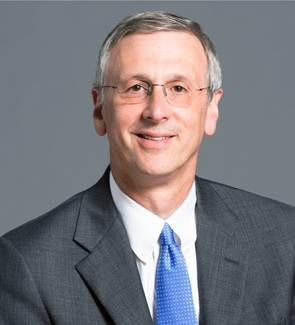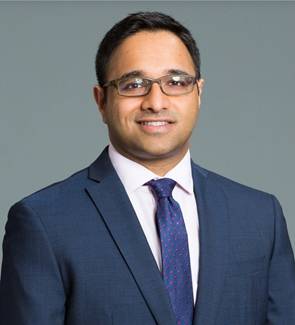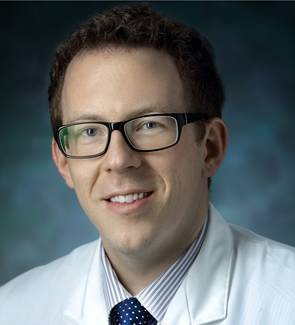In March of 2020, NYU Langone Health, like hospitals nationwide, became overwhelmed with COVID-19 patients, forcing it to concentrate its resources on caring for patients with the disease. As part of the response, the hospital’s radiology department followed national guidelines to postpone non-urgent and elective imaging exams. But even as radiology’s patient volume plummeted more than 60%, the imaging team began planning for the department’s inevitable reopening — work that is paying off with a resurgence in volume and a more efficient workflow that is expected to endure long after the pandemic.
Just a week after New York’s stay-at-home orders took effect in mid-March, Michael P. Recht, MD, Louis Marx professor and chair of NYU Langone’s department of radiology, sent an email to his team of 223 radiologists and 1,200 staff members who work across 56 imaging sites. He explained that the department would eventually reopen but would need to significantly change its workflow for staff and patient safety in the post-surge era. “I wasn’t sure patients would want to come back given the safety concerns,” Recht says. “But both our faculty and staff were committed to reimagining the department’s operating procedures so that we could safely reopen.”

Michael P. Recht, MD, Louis Marx professor and chair of NYU Langone’s department of radiology, knew the department would need to significantly alter its workflow to keep patients and employees safe in the post-COVID-19 surge era. |
With his team on board with returning to work, Recht made it a priority to involve everyone — including radiologists, technologists, receptionists, schedulers, and IT experts — in the reopening efforts. “To be successful, you need to have everybody engaged, and you need to have the experts’ opinions,” Recht explains. “For instance, I’ve never been a scheduler, so we needed to hear from our schedulers about how we could alter our process to keep everyone safe. Radiology leadership wouldn’t have gotten it right without including all of the members of our team.”
Gathering Information
Recht appointed Gregory Chang, MD, MBA, professor at NYU Grossman School of Medicine and associate chair of outpatient imaging and strategy at NYU Langone, Ankur Doshi, MD, associate clinical director of radiology informatics at NYU Langone, and Hersh Chandarana, MD, associate chair of clinical and translational research, to lead the planning efforts. These efforts involved collaborating with team members across locations on everything from reconfiguring waiting room procedures to developing more efficient imaging protocols.
To ensure everyone had a voice in the planning, 140 team members representing all areas of the department’s operations were organized into nine committees. Some of the committees were modality specific while others focused on processes, including leveraging the patient portal for contactless patient scheduling, impacting all of NYU Langone’s imaging sites. Each committee convened independently through virtual meeting technology to discuss things like extending appointment times to allow for disinfecting between patients and updating protocols for more efficient imaging.
Once a week, all of the committees gathered together virtually to share and adopt ideas. “Our team is spread out among different sites, and each site operates a little differently,” Doshi notes. “We had team members from Long Island, Staten Island, Manhattan, Brooklyn, and our other affiliate locations working together to develop a uniform approach to reopening the radiology department.”
Reducing Wait Times
Many of the changes that the team made were aimed at maintaining social distancing among patients and between patients and staff, particularly in the waiting rooms. To reduce the number of patients in the waiting rooms, the team worked with radiology’s IT department to integrate a text messaging system into the electronic health record. Now, they ask patients to wait outside or in their cars and use text messaging to keep them informed. When the technologists are running behind, they use the system to send alerts to patients and ask them to wait until they receive another text message to enter the imaging center. They meet patients who are unable to receive text messages at the door with information about wait times.
“For the longest time, I’ve been trying to replicate what the airlines do to keep flyers updated about flight delays,” Recht says. “It’s so hard when a patient gets to the imaging center, and they’re told that we’re running behind but they have no idea how long the wait will be. Keeping patients informed through text messaging is really valuable, and it’s something that we’re working to refine so that we can be as accurate as possible when we tell patients the expected wait times.”

Ankur Doshi, MD, associate clinical director of radiology informatics at NYU Langone, co-led the department’s COVID-19 reopening plans across multiple locations. |
Another way the team has reduced the number of patients in the waiting rooms is by uploading patient intake forms onto the patient portal. When patients call to make appointments, the schedulers ask them to complete the forms in the portal prior to their appointments. If patients aren’t already active in the portal, the schedulers follow a script that encourages patients to use the portal. Once patients agree to use the portal, the schedulers can easily send them a link and walk them through the process to activate the portal and complete the forms.
If patients decline to use the portal, the schedulers offer to email the forms and ask them to bring the completed documents to their appointments. “We encourage patients to do the paperwork electronically, so they don’t have to spend time in the waiting room unnecessarily handling paper,” Chang explains. “We want to decrease the amount of contact that patients have with each other and with our staff to make it as safe as possible.”
Screening Patients
The team has also implemented pre-appointment patient screening as a safety precaution. When patients call to schedule their appointments, the schedulers ask them questions to rule out COVID-19. These questions include whether patients have tested positive for the virus and whether they are exhibiting any of the
symptoms that the Centers for Disease Control and Prevention has outlined for the virus. When patients arrive for their appointments, designated screeners stationed at the door of each imaging center ask them these questions again and take their temperatures.
If a patient presents with two or more COVID-19 symptoms or if a patient indicates that they have tested positive for the virus, the imaging team takes them to a separate area within the imaging center for their exam. “We thought long and hard about whether we should be imaging COVID-positive patients,” Recht says. “We decided that because our emergency rooms are overwhelmed, we had a responsibility to care for these patients. We have made sure our team has the necessary personal protective equipment to image these patients safely and appropriately in our outpatient centers.”
Whether patients have COVID-19 or not, the radiology team knew it needed to be diligent about cleaning the exam rooms and imaging equipment to reduce the chances of spreading the virus. Through conversations that involved the technologists and other staff, the group decided to lengthen exam times to allow for cleaning between appointments. “The teams worked together and came up with the length of time for each type of examination: We added 10 minutes to our MRs and diagnostic mammograms and five minutes to our CTs,” Recht says. “Since reopening, we’ve continued to meet with our outpatient staff and have found that we’ve become so efficient that we don’t need as much time as we thought for each exam. We’ve actually started cutting back the length of time designated for each exam.”
Updating Protocols
While the team knew it needed to allow more time for cleaning, it also took measures to shorten some exams to reduce contact duration. Jan Fritz, MD, associate professor of radiology at NYU Grossman School of Medicine and chief of the division of musculoskeletal radiology at NYU Langone, worked with Timothy Shepherd, MD, PhD, assistant professor in the department of radiology at NYU Grossman School of Medicine, to co-lead a committee of advanced technologists that analyzed the protocols for the most-common MRI exams, including musculoskeletal and neuro, and considered ways to reduce the image acquisition time without sacrificing image quality. “With COVID-19, we had a lot of idle scanners,” Fritz explains. “We took advantage of the downtime to look at our protocols, and we devised strategies to reduce the image acquisition time using the latest acceleration techniques.”
Fritz and his colleagues had been researching ways to accelerate acquisitions to improve tolerability for patients with painful conditions, reduce patient anxiety, increase accessibility, limit motion artifacts, and decrease the need for sedation and anesthesia even before the COVID-19 pandemic, but some of the department’s radiologists were reluctant to adopt new protocols because they were used to doing things their way. The pandemic motivated the team to establish standard protocols across the enterprise, Recht says. “We had an inclusive process with a committee that included representatives from every campus and every subspecialty,” Fritz explains. “We agreed on protocols for each body region, and then everybody worked through their local teams to get the protocols approved.”

Jan Fritz, MD, associate professor of radiology at NYU Grossman School of Medicine and chief of the division of musculoskeletal radiology at NYU Langone, co-led a committee to analyze the protocols for the most-common MRI exams. |
With the new protocols in place, the team has accelerated the image acquisition time between 25% and 75% across the board without reducing the number of sequences or compromising the image quality, Fritz says. “COVID-19 has been a sad situation, but it has been a good situation in that the radiologists were able to come together to agree on one set of protocols to use at each site,” he says. “Now, we know we are using standard protocols at each of our sites based on best practices, which we believe is a good thing for our patients. It ensures patients undergo the same high-quality MRI examination regardless of the site, standardizes the exam times to make scheduling easier, and helps the interpreting radiologists read the exams more efficiently because the protocols are all the same.”
Working Remotely
While many of the measures the team has implemented focus on reducing interaction among patients and between patients and staff, it has also worked to limit the amount of interaction among employees. Recht says that technologists and other staff have separated their computers to ensure that they don’t have to gather around the same desk. Sites have also designated team members who help keep staff from crowding together. “The architecture is different at each of our imaging centers, so we have really relied on our local teams to address social distancing at each of their sites,” Recht says.
To further reduce interaction among employees, the team also instituted work-from-home opportunities for radiologists and other team members. Before the COVID-19 pandemic, the department had about 50 remote workstations among its 223 radiologists. But as soon as the pandemic emerged, Recht worked with the department’s IT team to secure nearly 100 additional workstations so that most radiologists could work remotely. “Allowing people to work from home and have flexible work hours is something that is going to endure,” Recht says. “We will still need to have a presence in our hospitals and our outpatient centers, so we can’t have everyone working from home at the same time. But we can stagger schedules, and I think that’s going to increase wellness and work-life balance for our faculty.”
Like the radiologists, several of the department’s billers, schedulers, and other staff members are also working remotely. “We’re actually doing a study now to measure the productivity,” Recht explains. “We anticipate that a number of those folks will also be working from home part-time in the future. We want to give our staff the same flexibility that we give our faculty, and, in all honesty, it’s going to benefit us financially because the amount of space and offices that we need will probably decrease, which will decrease our expenses in the future. It’s a win for everybody.”
Lasting Impact
NYU Langone’s radiology department reopened five weeks after stay-at-home orders took effect in New York City, which was particularly hard hit by the initial COVID-19 surge. Since then, the department’s CT exam volume has re-turned to 95% of normal. Although other exam volumes are climbing more slowly, overall outpatient exam volume has now rebounded to approximately 85% of pre-Covid-19 volumes.
To help address patient anxiety, the radiology team has added a special
COVID-19 page on its website that outlines all of the safety precautions it is taking to protect patients and staff. It has also added safety information to the patient portal, and the schedulers share the information with patients when they call the office. “The schedulers have a one sentence script to help assure patients that we are taking precautions to keep them safe,” Doshi says. “If patients have questions, the schedulers have information at hand to go into further detail.”
While sharing COVID-19 information with patients won’t be necessary once the nation gets past the pandemic, Recht anticipates that many of the changes the team has made will endure. Like remote working, he expects that the team will continue to leverage several innovations, chief among them the text messaging system to keep patients informed about wait times, the electronic process for submitting patient forms through the patient portal, and the accelerated protocols to ensure patients don’t need to spend any more time in the department than necessary. Recht attributes the lasting impact of these changes to the team’s collaborative approach to addressing the health crisis.
“When you take time to gather input and involve people from each level of the organization in a process like this, you get diverse perspectives and expert insights that lead to solutions that are really the best solutions for the team,” he says. “While every practice might have a different way of approaching these situations based on their unique circumstances, I think it’s a universal truth that it’s important to engage everybody in the process. It allows team members to better understand and take ownership of the outcomes. Our team’s response to the COVID-19 pandemic is proof of this concept, which we strive to instill in everything we do.”




